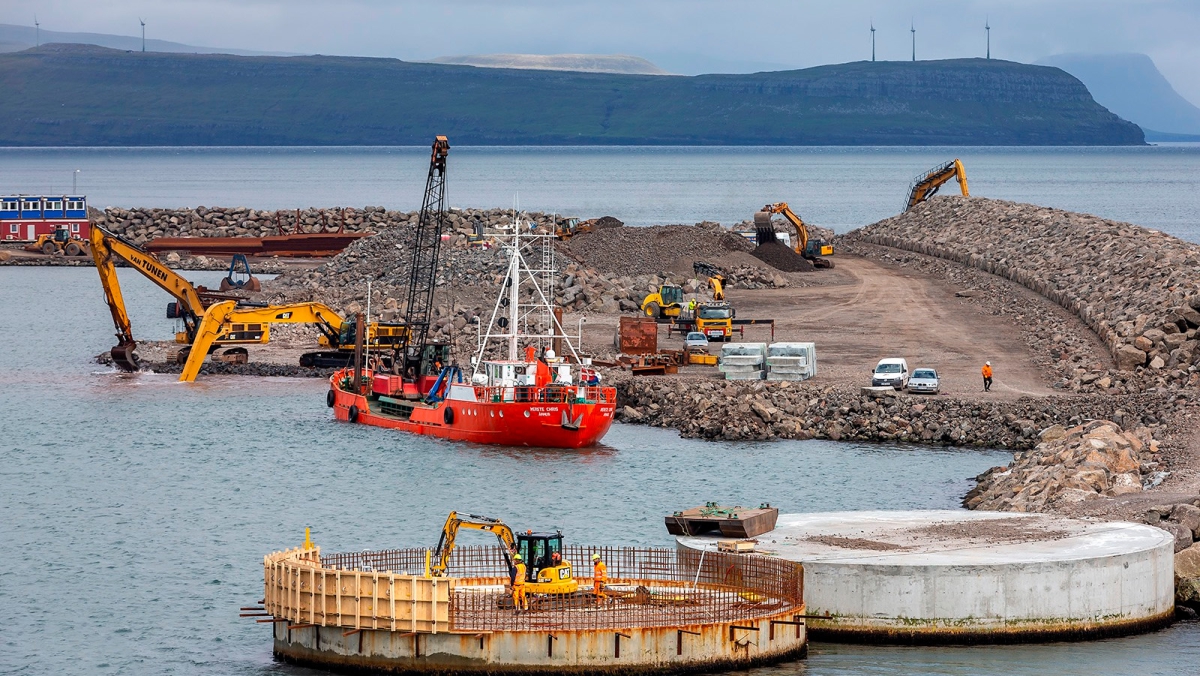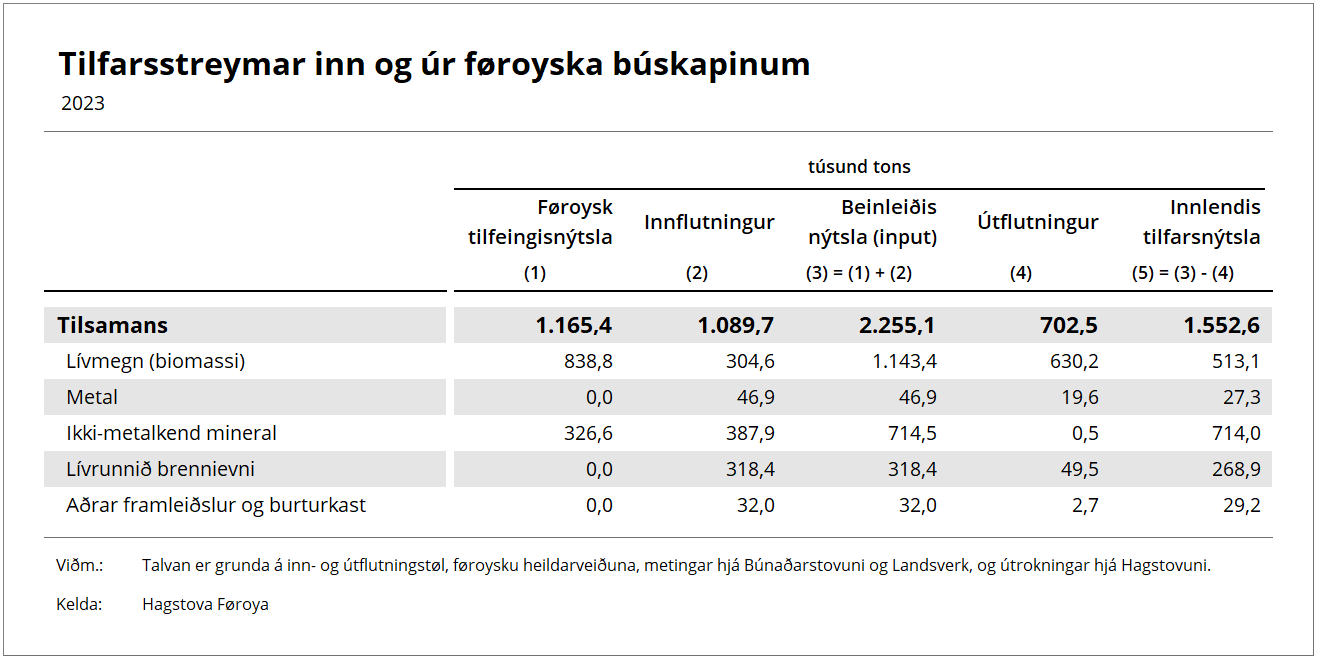Material flows
03. Jul 2024
Material consumption declining

Statistics Faroe Islands has published data on material consumption in the Faroese economy for 2023.
Materials consumed in the Faroese economy are either imported or extracted domestically. The materials that are not exported are used in the local economy. The Faroese material consumption in 2023 amounted to 1,552 thousand tonnes, equivalent to 28.6 tonnes per capita.
Most domestically extracted materials fall into the biomass category. In 2023, 839 thousand tonnes of biomass was extracted from the environment, including Faroese fisheries plus some straw and grazed biomass. 305 thousand tonnes were imported, including foodstuffs, animal feed and timber. 630 thousand tonnes of biomass were exported. This means that 513 thousand tonnes were used in the Faroese economy.
The second-largest category is non-metallic minerals. The table below shows that 327 thousand tonnes of non-metallic minerals were extracted from the Faroese environment, and 388 thousand tonnes were imported. Stone makes up the largest portion of the non-metallic minerals extracted from the Faroese environment. Imports in this category predominantly consist of sand and stone. The export figure in this category was close to zero in 2023, leaving a total of 714 thousand tonnes used in the Faroese economy.
Most fossil energy is imported and mainly consists of petrol and fuel oil.
The table below shows that the domestic material consumption dropped by 55 thousand tonnes (1.7%) from 2022 to 2023. The biggest decrease is due to sand and stone consumption.
[px-graph-1]
Statistics Faroe Islands has material flow data dating back to 1998. The graph below shows that domestic material consumption has dropped since it peaked in 2020. It also shows a substantial increase prior to the 2007-2008 financial crisis and a sharp decrease immediately after.
[px-graph-2]
There has also been a decline in material consumption per capita, dropping from 36 tonnes in 2020 to 28.6 tonnes in 2023. This is a promising downward trend, although Faroese material consumption remains higher than in neighbouring countries.
[px-graph-3]

Looking at import and export flows of materials, we see that materials extracted from Faroese natural resources are organic materials such as fish and stone. Imported materials are almost equally distributed between foodstuffs, animal feed products, stone and gravel, and fuel. Exported materials are predominantly fish, ships and fuel.

The Economy-wide Material Flow Accounts (EW-MFA) describes the physical interaction of the economy with the natural environment and the flows of materials between the Faroese economy and the rest of the world economy.
The data provides an overview of the amounts of various materials that are extracted from the environment, imported for use in the Faroe Islands or exported.
Material flows:
- Faroese material consumption is materials extracted from the Faroese environment. The largest quantities come from sea fish and stone from quarries. Also included in the data are estimated figures for cultivated vegetables, straw and grazed biomass.
- Imports and exports are listed as the total imports and exports in tonnes. All goods are classified according to their main constituent material – e.g. cars are classified as “2.3. Other metal products”.
- Direct material input is materials entering the Faroese economy either directly from the Faroese environment or as imported materials.
- Domestic material consumption is the materials entering the economy (direct material input) minus the materials exported from the economy.
- The physical trade balance is imported materials minus exported materials.
Materials are classified according to the following main categories:
- Biomass: biological materials such as fish, grass, vegetables, timber, etc.
- Metallic minerals: materials with primarily metallic elements such as machines, cars, bicycles, etc.
- Non-metallic minerals: materials such as stone, sand, concrete, etc.
- Fossil energy: fuel oil, petrol, etc.
- Other products: miscellaneous materials
- Waste
Read more about domestic material consumption indicators for the Faroe Islands and other countries on the SDG page.